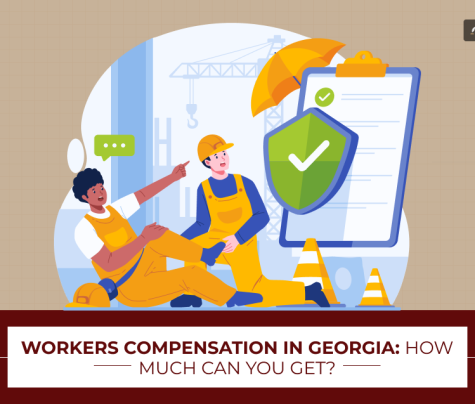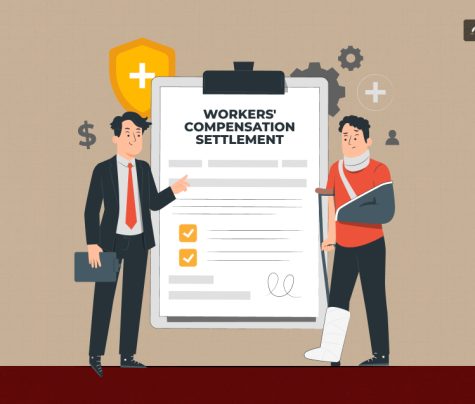
Dealing with the aftermath of a workplace injury can be overwhelming—chronic pain, ongoing treatments, and concerns about job security weigh on injured workers.
This article addresses the long-term effects of a work injury, offering insights into physical, emotional, and financial challenges and guidance on available support systems to aid recovery.
In this article, I will discuss how workers’ compensation can help employees manage their injuries’ lasting effects. Additionally, I will highlight ways employers can recover through return-to-work strategies and employee assistance programs.
If you’re wondering when to speak with a workers’ compensation lawyer or how to cope with lingering pain and financial strain, this article offers clear answers.
Continue reading to learn practical strategies for addressing the long-term impact of work-related injuries and staying on the path to recovery.
Role of Workers’ Compensation in Supporting Recovery

Workers’ compensation offers injured workers vital financial and medical support, aiding their recovery. It provides partial pay replacement to lessen the financial burden during rehabilitation. Additionally, it covers essential treatments like surgeries and physical therapy.
For example, an injured warehouse worker who requires extended recuperation can get money through workers’ compensation, eliminating immediate financial hardship.
Workers’ compensation lowers the danger of long-term physical impairment. It helps injured workers stay stable during recovery by guaranteeing access to appropriate medical care and financial support. The healing process gets off to a good start with this foundation of support.
Understanding the Long-Term Effects of a Work Injury
Workplace injuries don’t always end with physical healing. In many cases, the long-term effects of a work injury linger. Thereby, it affects various aspects of a worker’s life, including their mental well-being, financial security, and social relationships.
But how do the different types of long-term impacts of work injuries complicate recovery? Let me offer insights into how injured workers can cope with these challenges.
Physical Impacts
Chronic pain, decreased mobility, or long-term disability are physical side effects that may persist even after an injury has healed.
For instance, even after months of medical care and physical therapy, a worker with a serious back injury may feel stiff or uncomfortable. Eventually, this restricts their ability to move.
These chronic conditions may make it impossible to resume prior employment tasks. It might necessitate changes such as shortened workdays or altered assignments.
Untreated work-related injuries can sometimes get worse over time, raising the risk of long-term incapacity.
Psychological Impacts
The emotional toll of workplace injuries can be significant, potentially resulting in anxiety, depression, or post-traumatic stress disorder (PTSD).
For instance, an employee injured in a serious industrial accident may face recurring fears about returning to work, worrying that another accident might happen.
Mental health struggles can interfere with personal relationships, decrease confidence, and create additional barriers to recovery.
Without access to proper mental health resources, the psychological impact of a workplace injury can become a long-term burden.
Financial and Social Impacts
Lost income during recovery and medical expenses can strain an injured worker’s finances and lead to lasting hardship.
For example, someone who relies on overtime pay to cover monthly bills may struggle to meet financial obligations when they can only work part-time.
Work-related injuries can also disrupt your social life, as strained family relationships, isolation from friends, and reduced participation in hobbies often follow.
The combined financial and social impacts create a ripple effect extending far beyond the workplace, further complicating recovery.
Workers’ Compensation: A Critical Support System
Workers’ compensation payments offer more than financial and medical support. It safeguards an injured worker’s long-term stability.
Ensuring access to ongoing medical care and protecting workers from job loss or wage disputes, workers’ comp establishes a legal framework that helps employees focus on recovery.
Additionally, it covers mental health services when necessary, recognizing that the impact of workplace injuries isn’t always physical.
This system protects injured employees from financial ruin and gives them the resources to rebuild their lives after serious accidents.
How Employers Can Support Long-Term Recovery
Employers can help injured employees recover and return to work safely and productively. By offering targeted support, they can ease the recovery process and reduce the risk of long-term disability. This support includes mental health programs and personalized reintegration plans.
Implementing Employee Assistance Programs (EAPs)
Employee Assistance Programs (EAPs) provide injured workers access to counseling, financial advice, and stress management services, addressing emotional and practical concerns during recovery.
For example, a worker who suffered a traumatic injury may develop anxiety about returning to a physically demanding role.
By offering confidential counseling through an EAP, employers help reduce that anxiety, fostering a healthier mindset and smoother transition back to work.
Additionally, EAPs can guide employees in managing financial challenges during recovery, ensuring they remain stable.
Creating a Return-to-Work Strategy
A well-designed return-to-work strategy helps injured employees reintegrate into the workplace by accommodating their current physical and mental abilities.
Employers can develop flexible plans that include light-duty assignments, reduced hours, or temporary role changes until the employee fully recovers.
For instance, an employee recovering from a hand injury may temporarily handle administrative tasks rather than physical labor.
Clear communication between employers, healthcare providers, and employees ensures that the return-to-work process prioritizes safety while keeping the workers engaged and confident in their roles.
Coping Strategies for Injured Workers
Recovering from a work-related injury requires emotional resilience and financial planning. Injured workers can use the following strategies to cope effectively during this challenging period:
- Seek professional mental health support: Engage with a therapist or counselor to manage anxiety, depression, or PTSD that may arise after the injury.
- Stay physically active within your limits: Participate in prescribed physical therapy or light exercise to maintain mobility and improve overall well-being.
- Connect with support networks: Joining support groups for injured workers can foster a sense of community and shared experience, helping reduce feelings of isolation.
- Educate yourself about your rights: Understanding workers’ compensation laws can empower you to make informed decisions and ensure you receive the benefits you’re entitled to. The easiest way to do this is by hiring a seasoned workers’ comp lawyer.
Legal Considerations for Long-Term Work Injuries
Complex legal circumstances might result from long-term work injuries, especially when continuous medical care disagreements or compensation issues arise. Injured workers must know their legal rights and the procedure to file and sustain a claim.
A workers ‘ compensation lawyer can clarify issues such as rejected claims, postponed payments, and eligibility for extra benefits.
Employers are legally obligated to offer workers’ compensation coverage, and employees can be shielded from unfair practices or inadequate benefits by understanding when legal action is required.
Preventing Long-Term Impacts of Workplace Injuries
Preventing long-term impacts starts with proactive safety measures and a supportive workplace culture. Employers can minimize risks by implementing comprehensive safety training, maintaining equipment, and fostering open communication about potential hazards.
Workers can contribute by following safety protocols and reporting unsafe conditions promptly. For example, regular wellness checks and hazard assessments in industrial workplaces can reduce the likelihood of serious accidents, ensuring a safer environment for everyone.
Wrapping It Up!
Although workplace injuries can have long-term consequences, with the correct support networks and techniques in place, healing becomes easier.
Employers are crucial in promoting long-term well-being through customized support programs, while workers’ compensation benefits offer vital financial assistance.
Employers and employees may build safer, healthier workplaces that support a successful recovery for all parties involved by being aware of these long-term effects and adopting proactive measures.
Pat Baker is accident prone, is a workers’ rights advocate, and writes for workers’ comp lawyers in the Philadelphia area.
Read Also:
- How Long-Term Disability Insurance Covers Chronic Diseases?
- Having an Employment Law Attorney is a Blessing During THESE Times!
- Employer Responsibilities for Injured Workers: Your ULTIMATE Workplace Guide










0 Reply
No comments yet.